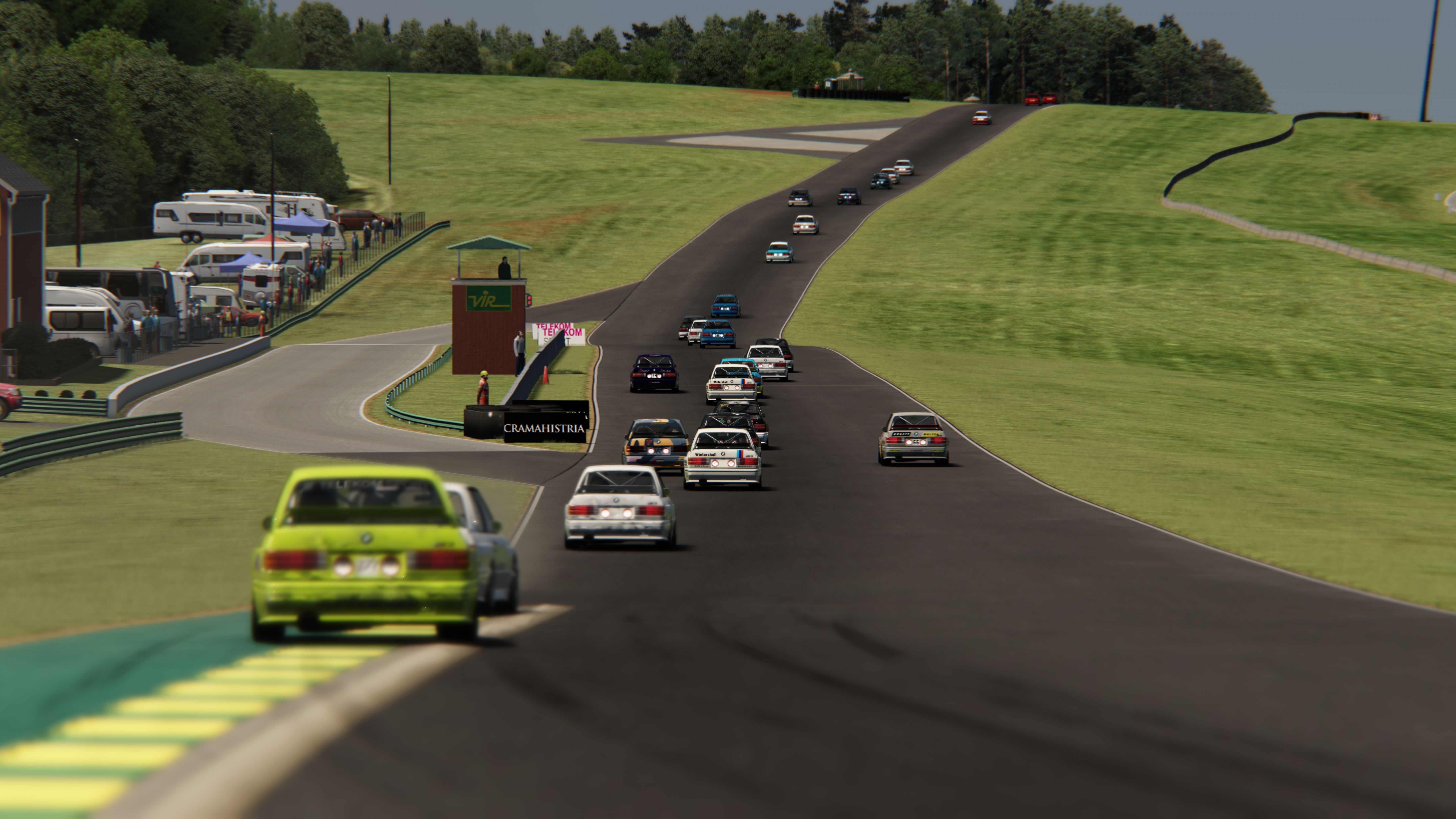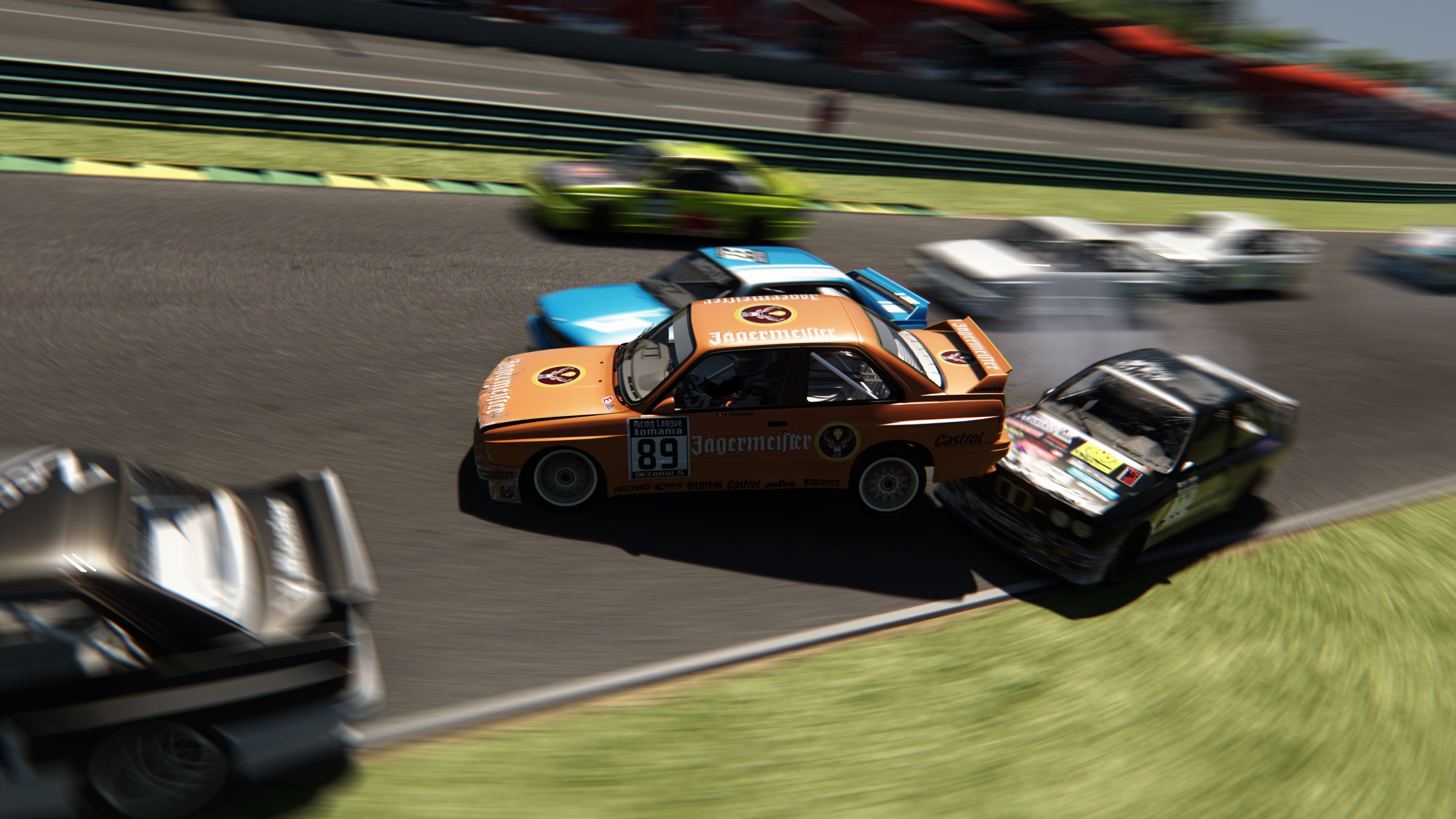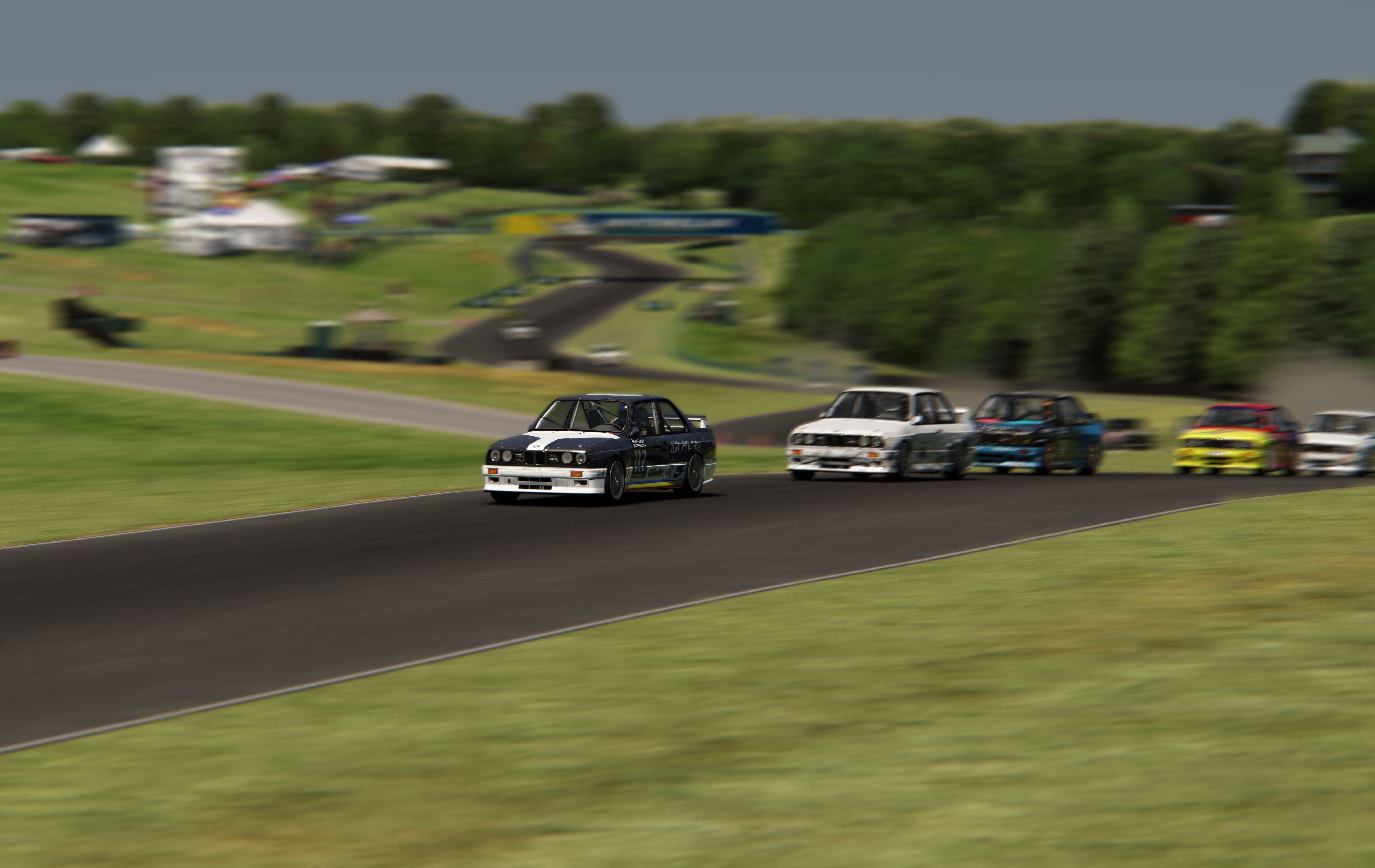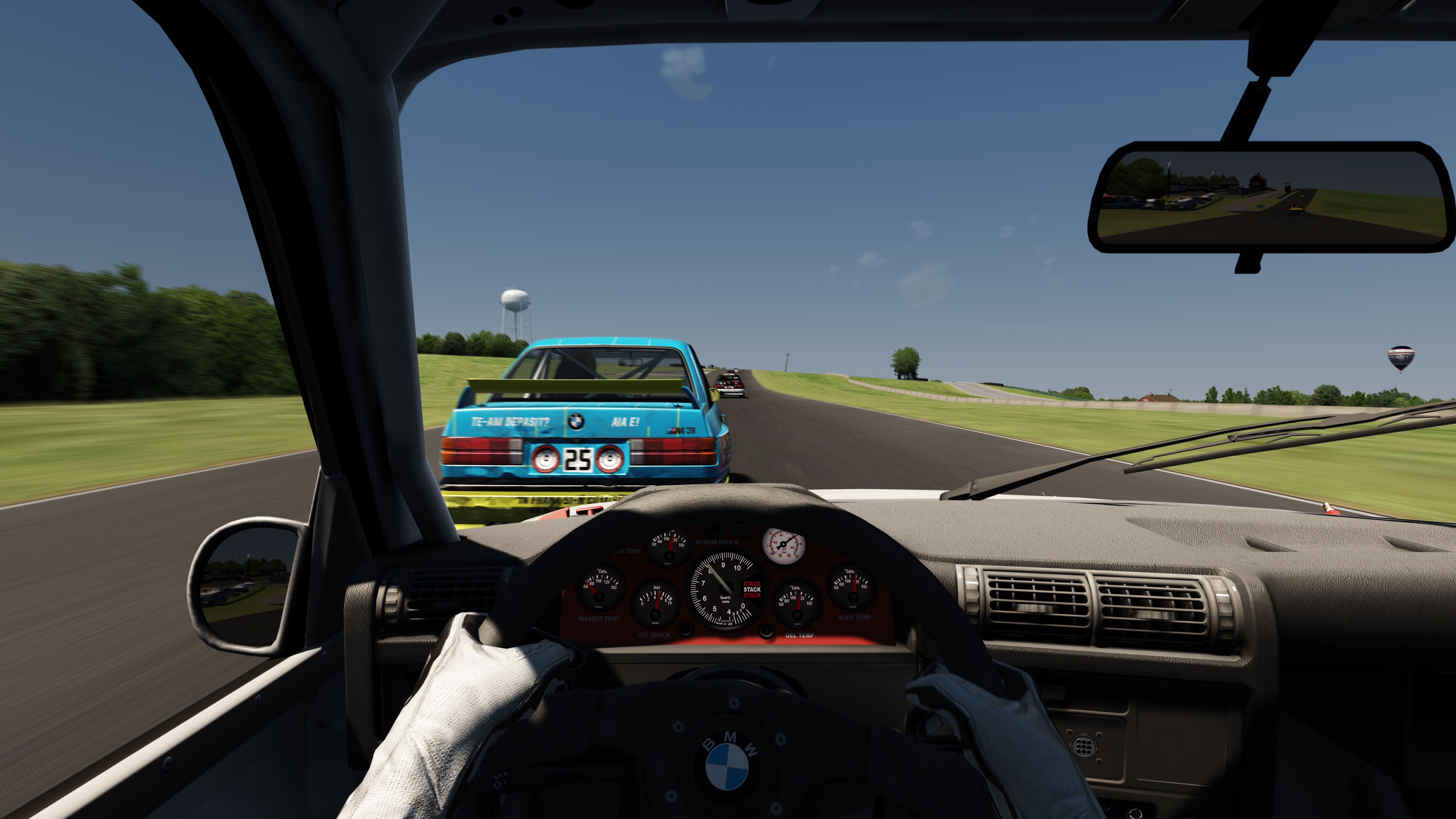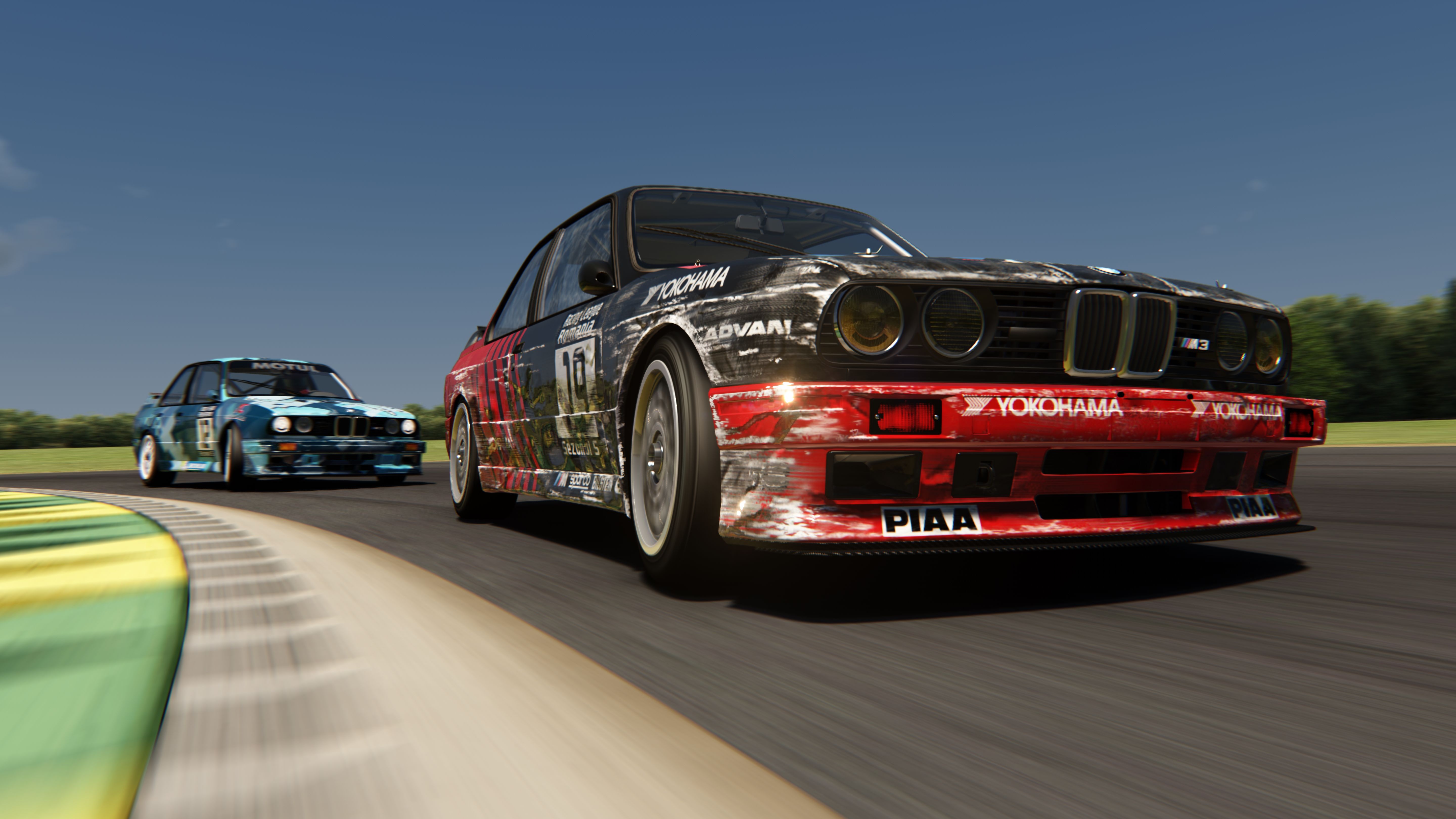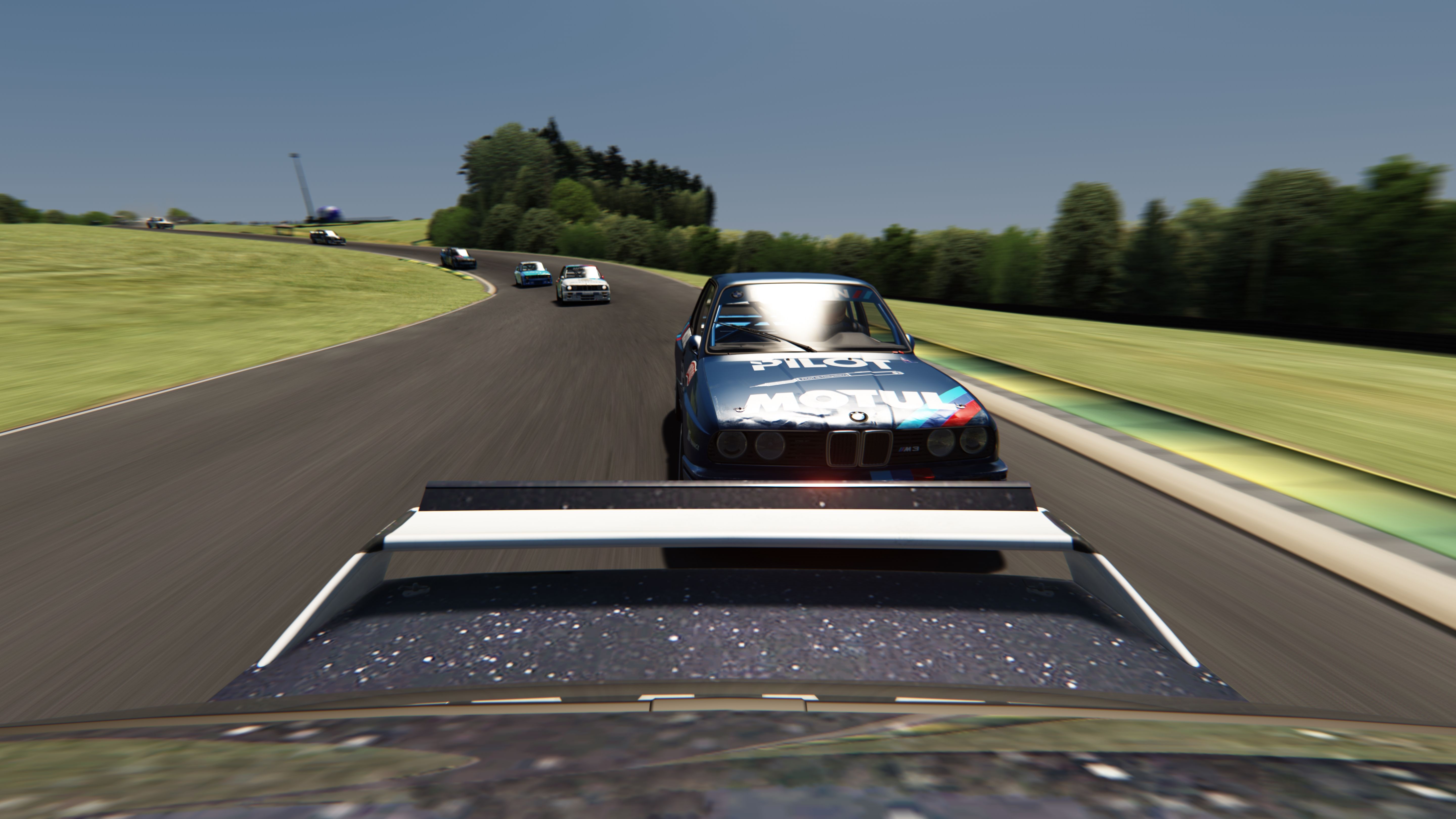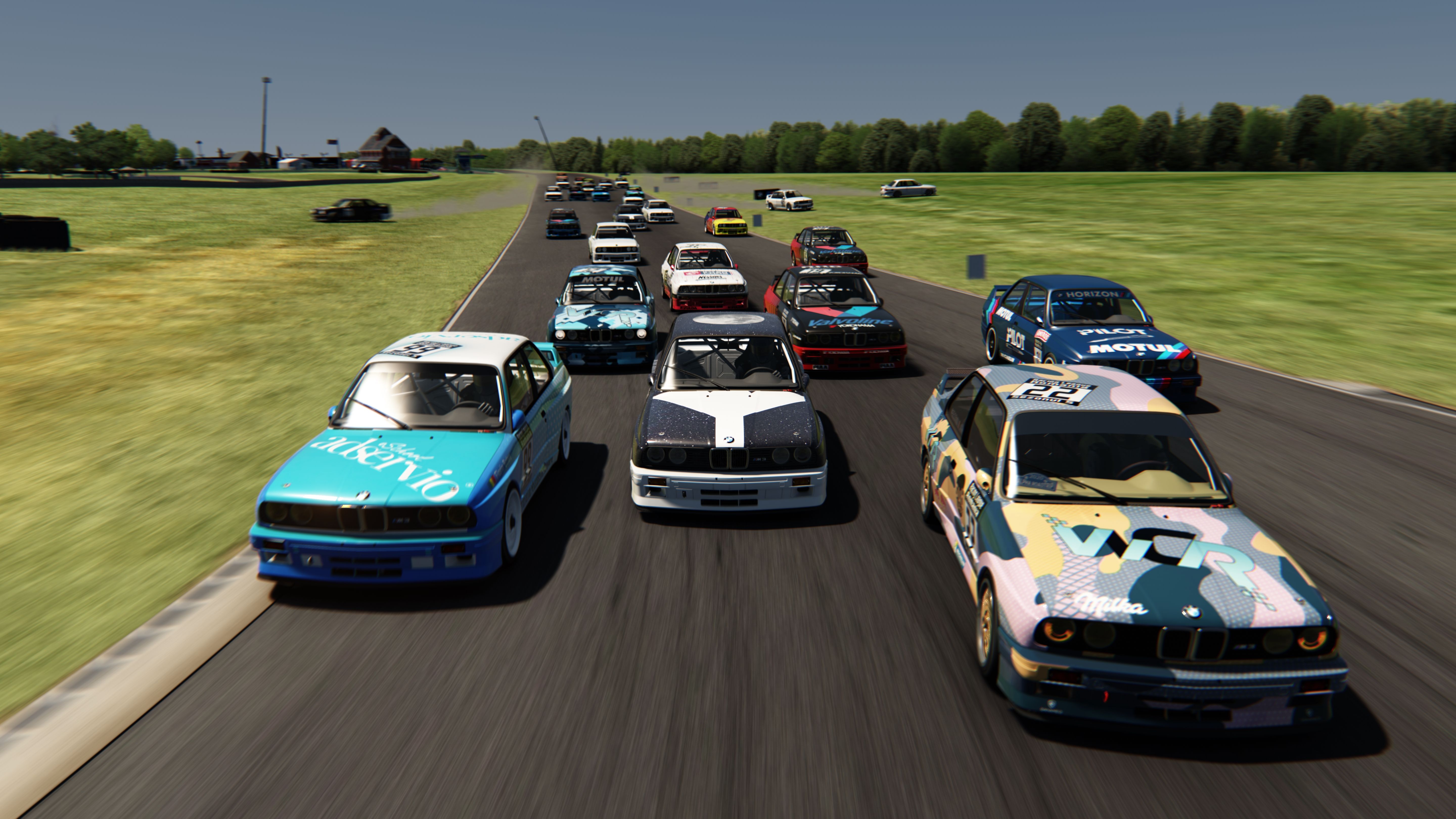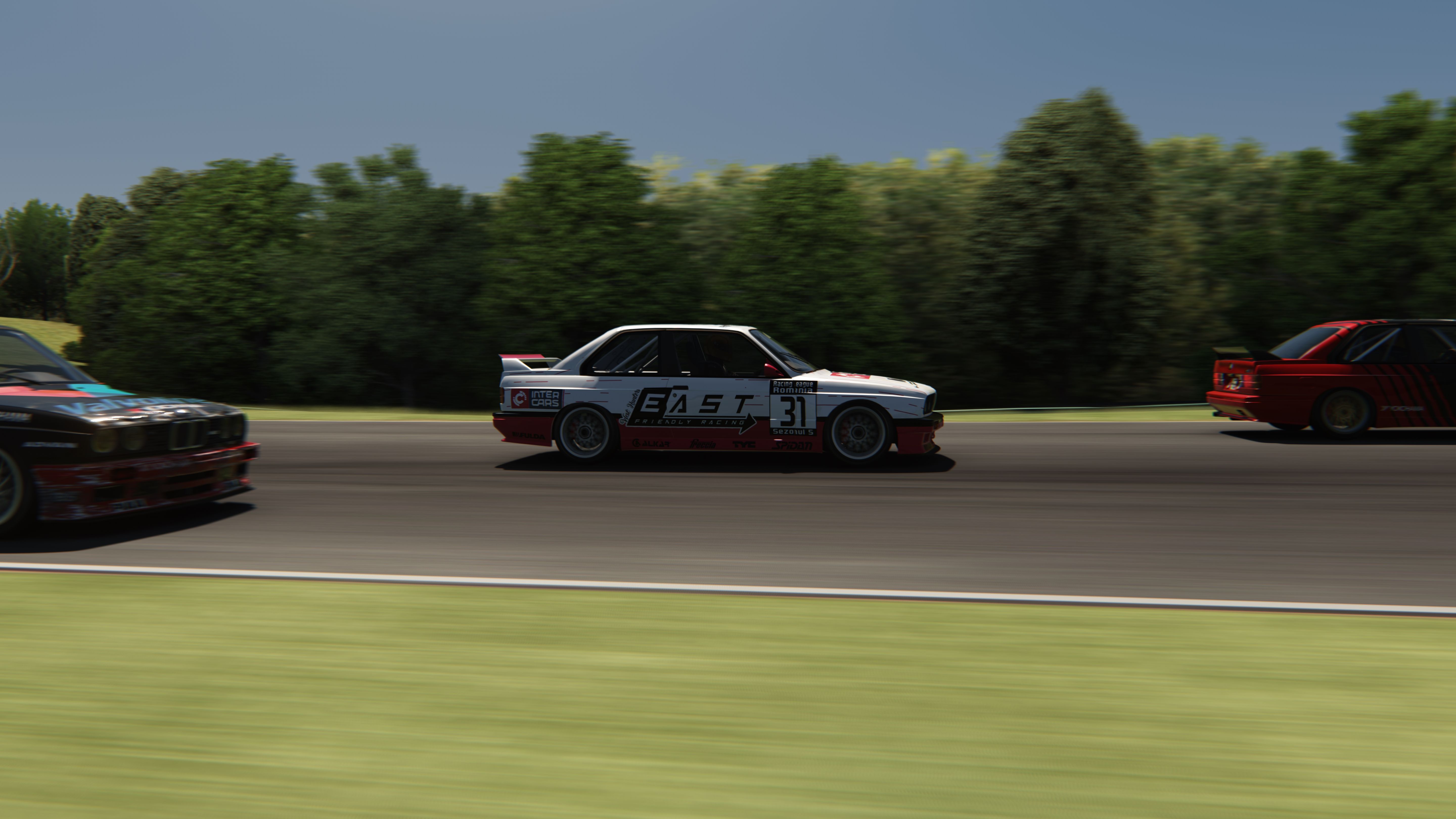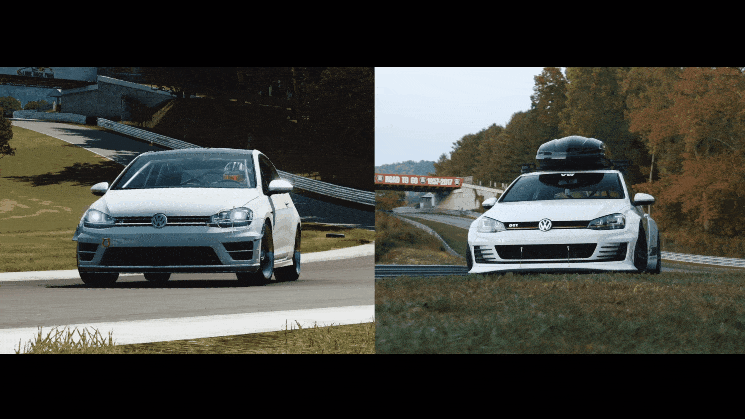The trying times we're all going through right now have made us alter our way of life and do without things we thought as essential parts of our everyday routine. More and more people realize most of the things they did at the office can be done at home with a video call in the background and even the world of sports was relocated to the digital world with photography quickly following in its footsteps.
That sports have become a thriving business is nothing new but the latest pandemic has increased the rate at which people turn to the virtual world to follow or partake in their favorite sports. Due to the travel bans and health risks, motor racing was also put on hold and, with so much free time, race drivers and teams turned to sim racing at a never-before-seen rate.
That sims are generally helpful for a driver is something that the industry has acknowledged decades ago but never before did the world's most important racing series give as much importance to sim racing as now with the bulk of them organizing computerized versions of the real thing which are immortalized in breathtaking screenshots - but is it proper photography?
The basics of photography remain the same, even inside a game
Adaptability. It's a key trait that's helped humans get this far on the evolutionary scale and that is vital nowadays when our routines have been disrupted and life has been - for many of us - confined to the walls of a house or an apartment. Businesses, too, have to adapt to avoid bankruptcy and, at the end of the day, motor racing is, truthfully, a business and keeping it all afloat has been tough especially since all of those involved rely on the scheduled events to go ahead and, as we can all plainly see, this doesn't seem to be the case with most races either outright canceled or postponed all around the world.
While there's a light at the end of the tunnel and we hope to be (at least partially) able to do some of the things we used to in the coming months, one can't help but be skeptical when it comes to resuming motorsport activities. Stuff we took for granted such as trans-continental air travel and being able to attend a mass-scale event along with several tens of thousands of people are now unattainable luxuries and this has hurt racing which is a spectator sport.
It has also hurt everyone involved, from team personnel, to track staff, and all the other people involved with taping and shooting each event and, basically, keeping the show on the road. We've seen many freelance photographers and videographers end up with months' worth of scheduled work disappear due to this pandemic and, with it went their income.
Specialized sites such as dailysportscar.com try their best to help by hosting job ads free of charge for those that no longer have a steady income flow due to the cancellations. While some people may find it harder to get new gigs these days - such as track personnel - others may have been thrown an unexpected lifeline via the unassailable move towards sim racing.
Sure, we know you don't actually need an F1-grade sim to learn the basics about driving fast in the real world on a track but many were still skeptical about just how useful a sim really is.
Initiatives such as GranTurismo's GT Academy have repeatedly shown that you can take someone whose only point of reference is the experience he's gained in the virtual world and then hone that experience to make it useful in the real world. Past GT Academy alumni Jann Mardenborough or Lucas Ordonez are now well-regarded pros racing in some of the world's top sports car series such as Japan's Super GT and the SRO's GT World Challenge Europe. iRacing too has gathered a large fanbase for the realistic way in which it simulates a real car's behavior on track and along with the growth of sim racing came increasing support.
Not only did more and more real racing drivers spend impressive amounts of money on top-level gaming rigs that they'd prop up in their houses to keep themselves in check when out of the car and out of the team's simulator (if it has one), but also top teams established virtual counterparts and enrolled the world's best sim racers to race for them in various online championships. When legendary teams like Williams join, you quickly realize things are getting serious and the fact that people are spending in excess of $10,000 or 15,000 on a bonkers setup doesn't seem that ludicrous (just check out how realistic Corvette Racing's Jordan Taylor's Simcraft rig is - it literally flipped in real life from the extreme force feedback after Taylor's car crashed in-game!
Only now, those pictures are actually screenshots artfully composed inside a game - or, rather, sim. People that take sim racing seriously really don't like when you argue that they're merely playing and, indeed, when you're putting hundreds of hours into something you're certainly not playing around.
That's why you can't play around with the screen grabs either. Sure, you and me both can take screenshots inside a game especially that some even offer dedicated 'photo modes' but it takes a trained photographer's eye to come up with images that really pop, images that are worthy of the social media feeds of the teams, series, and manufacturers that are now all getting busy behind the screens. F1, NASCAR, Australian Supercars, Indycar, and MotoGP are just some of the series that set up officially sanctioned series in sim and photographers are in demand.
How it's done
Back in the day, when you wanted to capture a still from the video game you were playing, you'd simultaneously press Alt+ PrtScn (on PC) and then you'd be able to open your screen capture in Paint. While crude, this shortcut allowed you to capture a snapshot mid-game and then you could pop said screenshot in an image editing software to enhance it at will.
The "photo mode" is nothing new, Polyphony Digital incorporating this feature in 2004's Gran Turismo 4. Back then, you had to unlock a number of backdrops and then you could place the cars you owned in front of those backdrops and move the camera around to get the desired result. Zooming was also possible and, like in real life, as you zoomed in closer, the background would get progressively more blurry - something photographers call bokeh.
Alternatively, you could pause the action during a replay sequence and, again, move the camera around to get a snapshot that would then be saved in the game files for you to share. Polyphony Digital's latest title from the world-famous Gran Turismo series, Gran Turismo Sport, comes with the "Scape" mode that goes a step beyond. Just like before, you've got a large array of stunning locations from which to choose from and, after you figured out what backdrop works best with what car and you've captured the image, you can plug it in the game's own image editor that's akin to Adobe's Lightroom giving you the ability to play with everything from saturation, contrast, colors, light levels, and so on and so forth.
When taking the picture, you can change the shutter speed, aperture, focal point, and just about any other function built in a modern D-SLR camera is at your fingertips in-game. "The ‘Scapes’ feature is a new format of photography, borne from a True HDR workflow and physics-based rendering technologies," the Gran Turismo website says. "Even the incredible brightness of the Sun is physically recorded and contained in each of these photos; and because each image also contains spacial information for that scene, it is now possible to ‘place’ cars into real-world photographs," the game's devs point out.
But all this can be considered 'still' photography because you control all the aspects of each scene, everything is carefully judged and positioned and, as such, nothing just happens to be in frame when it shouldn't be. However, when shooting an actual race, you can only control your camera's settings and the place you go to take the shots. You can't control the way the weather's going to be nor can you alter the behavior of the guys out on track.
BMW Motorsport has won the first two rounds of IMSA's iRacing-supported virtual series, its drivers taking the first two spots in the first round of the season at Sebring with Canadian Brun Spengler also scoring victory at Weathertech Raceway Laguna Seca. Both times, the BMW IMSA Team Red M8 GTEs were captured in action by Sam Cobb who also shoots for BMW and the BMW Team Rahal-Letterman Lanigan Racing in real life. Unlike those laboring endlessly in Gran Turismo's "Scape" mode, Cobb approaches the job from a more "realistic" angle as he takes the shots while the race is ongoing, rarely going back to a certain moment via the replay function.
Still, it isn't as tricky as it is in the real world. "You can even get angles that you could never get before," he told Road & Track. "You could basically have a TV lens—I think they're 18 to 3,000 mm sometimes—and you can get these really cool compressions and these really cool angles." British photographer Gary Parravani who's doing similar work for Bentley in Asseto Corsa Competizione, Kunos Simulazioni's latest sim dedicated to the SRO-sanctioned GT World Challenge championships and he agrees with Cobb. "It occurred to me that I now donʼt have to worry about getting shouted out by marshals or having my credentials revoked if I stand in a red zone," he underlined. (Parravani's pictures are featured in this article via his Xynamic Automotive Photography Instagram page)
Is it actually photography?
At the end of the day, you can't help but wonder if this is real photography or not. For starters, games like Gran Turismo or Assetto Corsa offer you the same sort of features you'd find on a pro digital camera but, at the same time, it's also a lot easier to get an amazing shot in the game than it would be in real life and you can even take pictures that are effectively impossible to capture away from the game. Rig shots, the photographs that require complicated onboard equipment to be bolted to the cars to capture the action, are a piece of cake in a sim, by comparison, "and you donʼt have to tell any mechanics they are going to miss dinner tonight," Parravani says.
Some well-known figures in the gaming photography community such as Duncan Harris, a former journalist who runs the website Dead End Thrills, was quoted by Hopes&Fears saying that he merely showcases to the audience the detailed environment within a game as crafted by its developers. "If you take a screenshot of a character model walking towards a largely static piece of scenery, however well it's composed, you're not an artist, you're a tourist." Thus, he thinks of himself as a "screenshot-er" because you needn't have the same sort of skills as someone who's a professional photographer in the real world.
On the other hand, Karl Smith, who began by taking pictures in GTA V using the smartphone that's available to each of the game's protagonists, reckons it may be proper photography, artful at that too. "If you capture virtual light in a virtual world with a virtual camera, is that photography?" he wonders.
Then you've got those that use these simulations as an aid to their real work. Photographer Sam Dobbins, for instance, found Forza Motorsport 6 to be a worthy alternative to scouting the location for one of his shoots. The place was Lime Rock Park, a 1.5-mile-long road course in Lakeville, Connecticut, some 1,200 miles away from his home in Florida. With the car he was meaning to shoot being worked on in the state of New York, Dobbins had no choice but to find the ideal places to shoot the car in the virtual world.
He proceeded to take a similar version of the car he was going to shoot around the virtual rendition of Lime Rock Park and park it in different spots around the track. He then worked with Forza's own "photo mode" to establish what the best angles would be and, with homework done, he eventually headed out to the track to take the actual shots. This all proves modern sims are insanely close to the real world, not only when it comes to recreating the physics of a car, but also the entire environment and the cars themselves.
So, is it legit photography or are these just glorified screenshots that you or I can take? While it's true we can take our own screenshots and it's easier than going out at the side of a track, setting your camera up then pointing it at an oncoming car, it's also true that you need to know a thing or two about photography as a whole to get really stunning imagery. And the same applies to sim racing. It's not actual racing but you need to know a thing or two about how people go about racing in real life to be good at it and "for me," says BMW's Philip Eng, "sim racing is more than just fun, it also really helps me to improve as a professional racing driver." Gaming photography is, too, more than just fun when done thoroughly and you have to do it thoroughly when you have world-renown brands as your clients.
***
BMW M3 E30 shots courtesy of Clau Morar in Assetto Corsa


